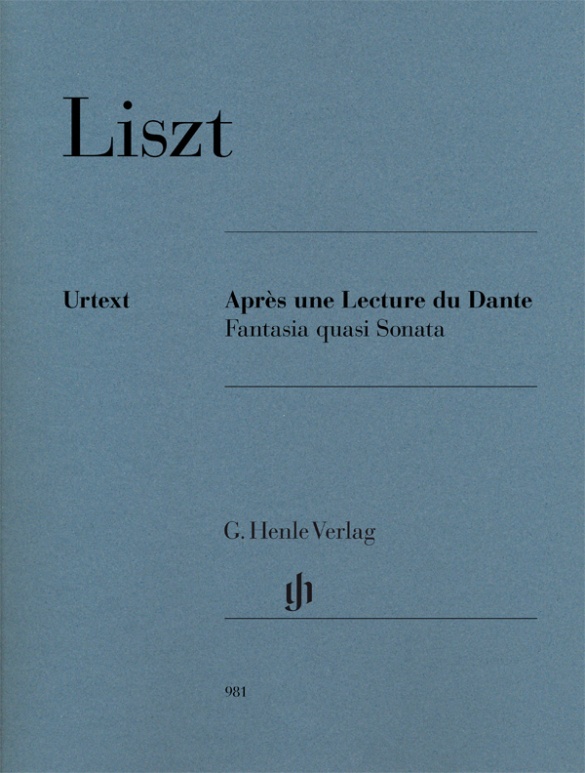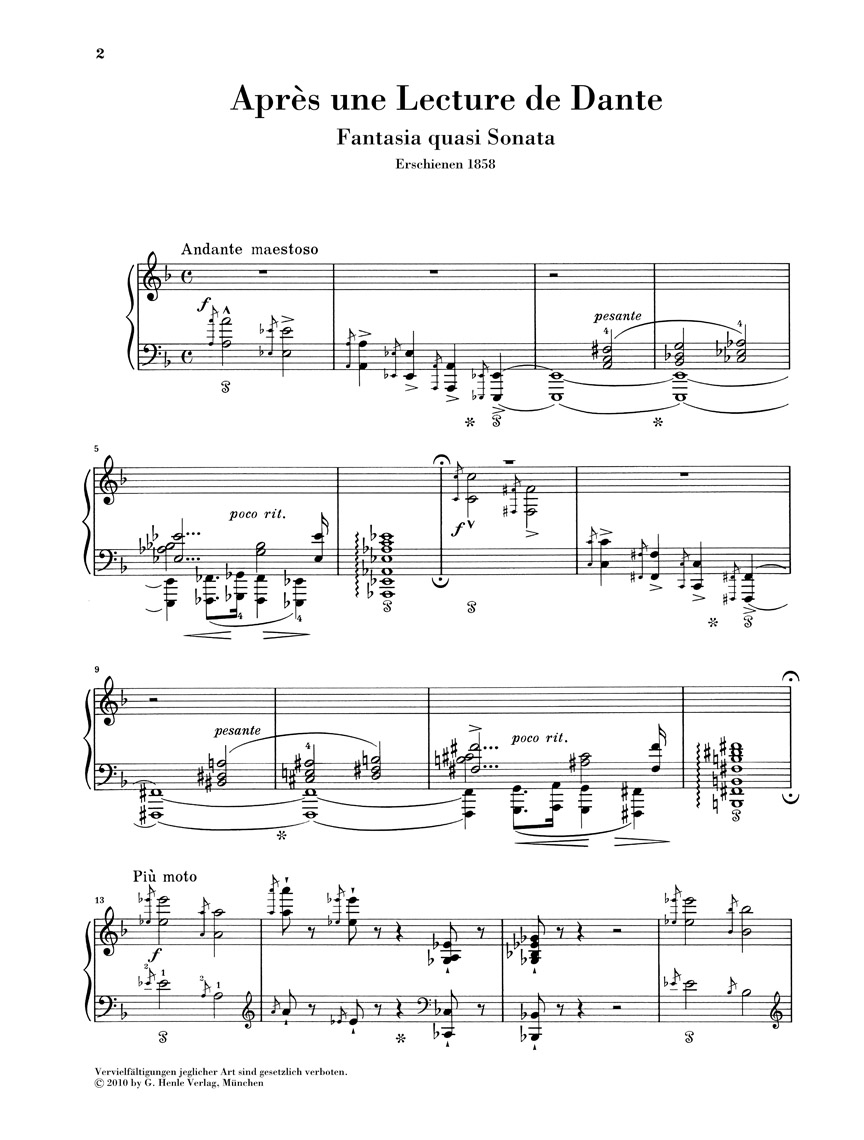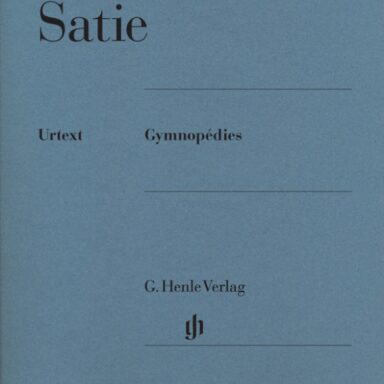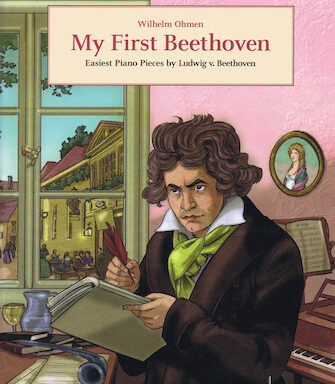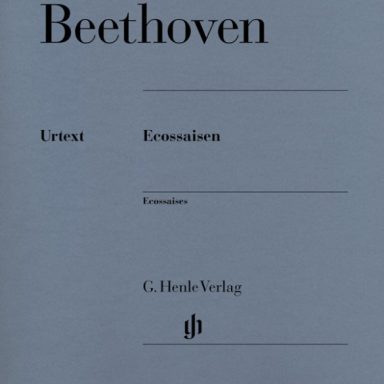Après une Lecture de Dante – Fantasia quasi Sonata
Sin existencias
Categorías: Liszt, Franz, Piano solo
Compositor: Liszt, FranzPeríodo musical: RománticoEditorial: Henle VerlagEditor: Ernst Herttrich (Editor) Hans-Martin Theopold (Fingering)
Solicita una cotización
Descripción
Often referred to by pianists as the “Dante Sonata”, it is the closing piece in the second volume of the “Années de Pèlerinage” (HN 174) and is now finally available as a single edition. In 1839, while under the spell of Dante’s “Divine Comedy”, Liszt had begun work on a “fragment dantesque”. He later incorporated the work in revised form into the volume “Italy” of his “Années de Pèlerinage”.
The single-movement sonata is based on the Canto “Inferno” in Dante’s poem. It describes the wild ride of the soul into hell in an effective manner, finally closing with several forgiving chords in a kind of transfiguration – one of the best examples of Liszt’s technical ingenuity and sound artistry.
Especificaciones
| Peso | 0,16 kg |
|---|---|
| Dimensiones | 31 × 23,5 × 0,5 cm |
Detalles
| ISBN: | 979-0-2018-0981-6 |
|---|---|
| Páginas: | 30 |
| Código editor: | HN 981 |
| Formato: | Partitura |
| Dificultad: | Ninguna |
Productos relacionados
- Libros
- Partituras y Métodos
- Material Didáctico
- Audio/visuales
- Catálogo
-
Mi pedido
-
Mi pedido
No hay productos en tu pedido
-
- Acceder

